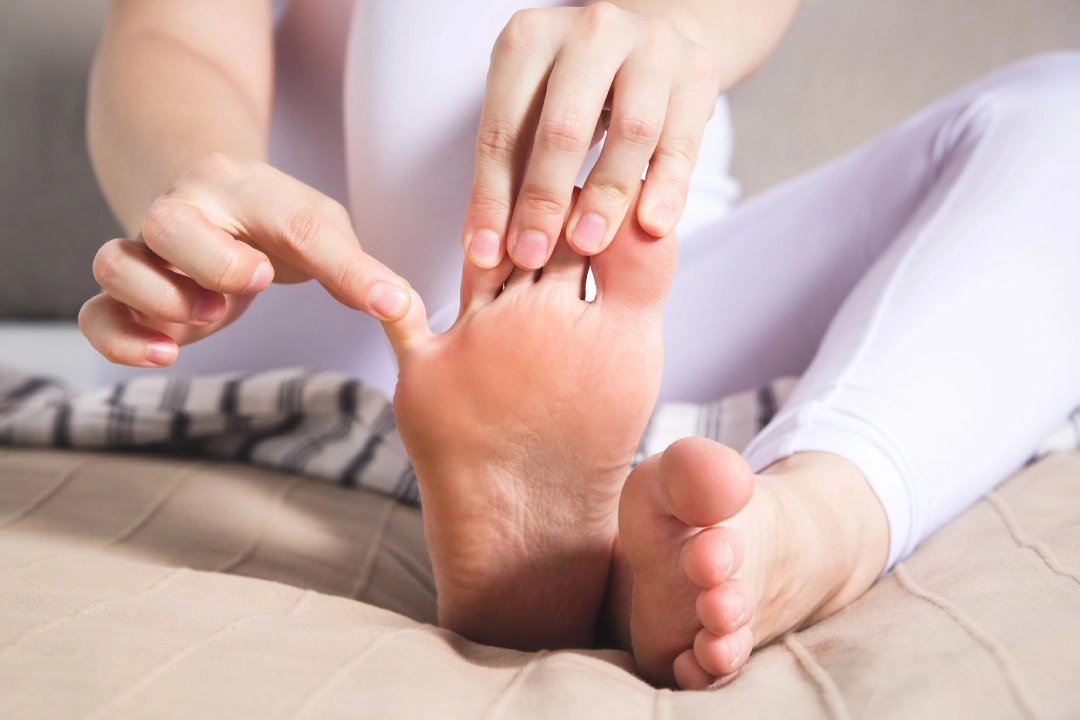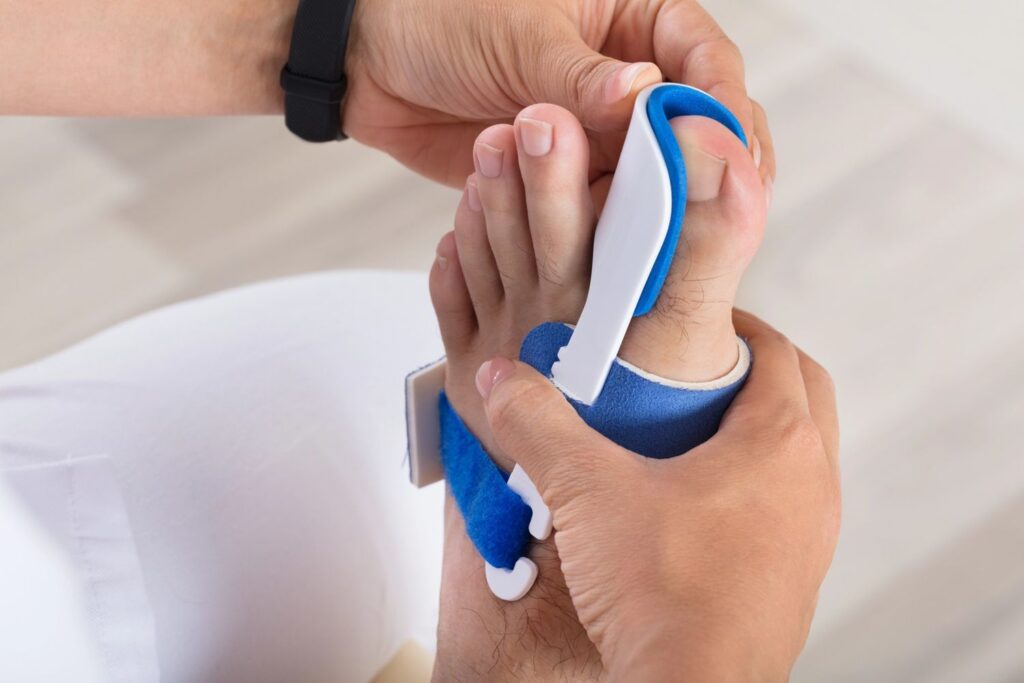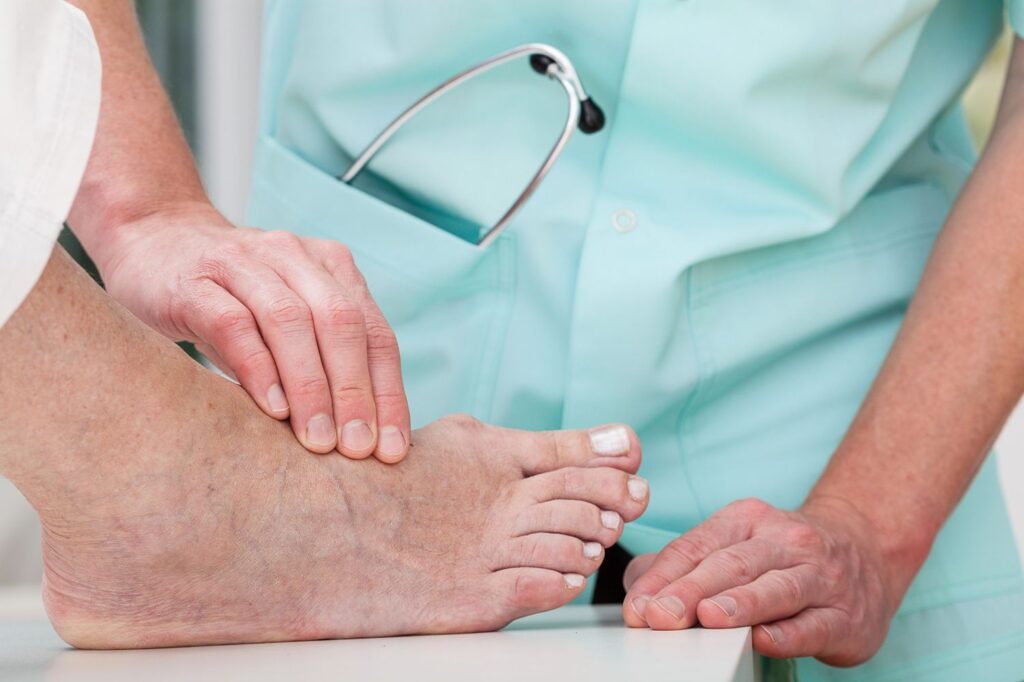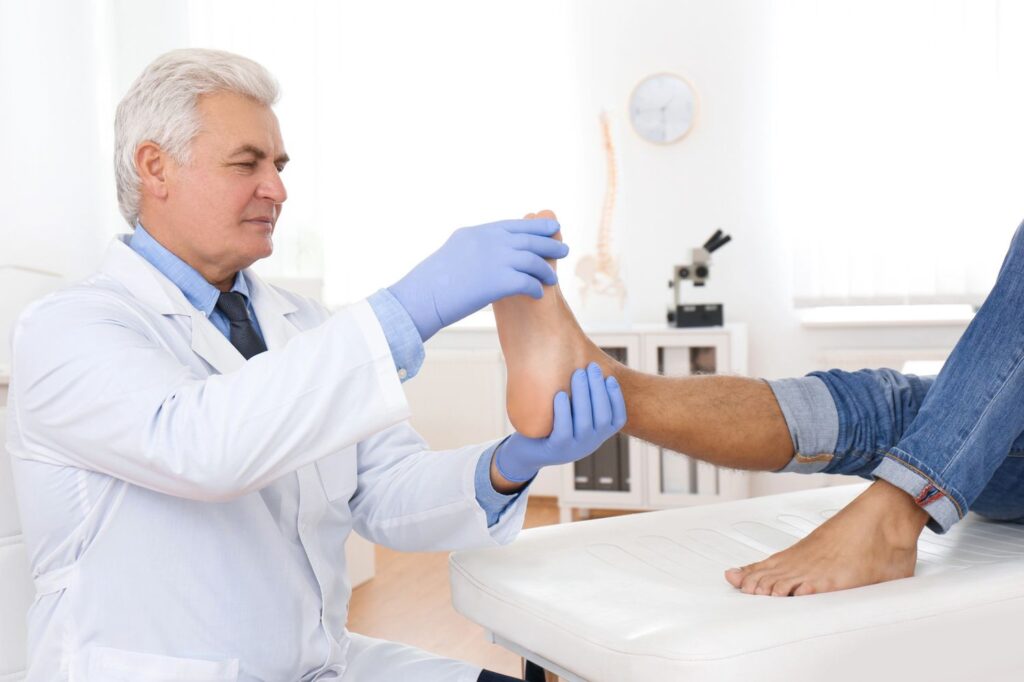Toe pain hits fast and makes every step feel like punishment. It interferes with walking, running, even getting out of bed in the morning. Most people search online wondering: “Who do I actually see about toe pain?” A primary care doctor? A podiatrist? An orthopedist?
This guide clears things up with practical info, simple explanations, and real advice on how to get relief, especially if you’re in Pinnacle and need expert care like Vital Podiatry Cypress Foot and Ankle Specialist.
When Toe Pain Needs Attention
A sore toe after bumping into furniture usually settles down. But certain warning signs say “get medical help now.” You make the call depending on how intense the pain is, how long it lasts, and any alarming symptoms:
Seek medical attention if:
- You can’t put weight on the foot
- Pain lasts more than 5–7 days
- The toe looks deformed or crooked
- It becomes red, hot, and swollen
- There’s spreading infection or pus
- Numbness or tingling develops
- You have diabetes and spot any wounds
A toe might be tiny, but small injuries can snowball into major problems when ignored.
Common Causes of Toe Pain
Toe pain seems simple, yet several medical issues could be behind it. Each trigger points toward a different kind of specialist and treatment. Understanding the cause helps you take the right next step rather than guessing and hoping the pain fades.
Injuries: Stubs, Sprains, and Fractures
Stubbing your toe happens in seconds, hitting a table leg or misjudging a stair and the pain shoots up instantly. While bruising and swelling are common, some cases move beyond a harmless bump.
Look for these signs that indicate a more serious injury:
- Deep purple discoloration that spreads quickly
- Swelling that doesn’t shrink after 48 hours
- Sharp pain increasing when you walk or apply pressure
- Toe bending at an odd or unnatural angle
- Difficulty lifting or flexing the toe
When the bone cracks or dislocates, ignoring the injury often leads to major complications. The bone may heal improperly, causing chronic stiffness or future arthritis right inside the joint. Some people notice a long-term imbalance or limping just because they avoided early treatment.
You might think taping your toe and hoping for the best works every time, but fractures and ligament damage benefit from imaging like an X-ray or ultrasound. Getting checked early supports healing weeks faster and lowers your odds of lasting pain.

Nail Troubles: Ingrown Nails and Infections
Toenails seem harmless until one starts digging into your skin. Ingrown nails become extremely painful because a hard nail edge slices into soft flesh with every step. Shoes apply pressure, irritation grows, and a tiny problem turns into a full-blown infection.
Classic symptoms include:
- Skin folding tightly over the edge of the nail
- A painful, throbbing sensation with light touch
- Redness, warmth, or swelling around the nail
- Drainage or pus, sometimes with strong odor
Improper nail trimming is the top cause, cutting nails too short or rounding corners encourages the nail to grow downward. Tight shoes squeeze toes together and worsen the pressure.
Fungal infections also show up frequently. You’ll see:
- Thickened, brittle nails
- Yellow or white discoloration
- Painful pressure under the nail
- Nail separating from the nail bed
Even though fungus doesn’t always hurt in the beginning, it can deform the nail enough to cause major discomfort. A podiatrist can remove infection safely or reshape the nail so you walk without pressure.
Never rip off parts of a toenail, that usually deepens the ingrown section and worsens the infection.
Big Toe Joint Pain: Arthritis & Gout
The big toe joint handles much of your body weight while walking. When something interferes with its function, you feel it particularly during push-off with each step.
Common causes of joint pain include:
- Osteoarthritis: wear-and-tear breaks down cartilage
- Rheumatoid arthritis: the immune system attacks joints
- Gout: uric acid crystals lodge in the joint
You might notice:
- Stiffness getting out of bed in the morning
- Pain when bending or extending the big toe
- Swelling after a long day on your feet
- Hard bumps called bone spurs forming near the joint
- Nighttime toe pain so bad you can’t tolerate bedding touching it (classic gout flare)
Arthritis gradually restricts movement until walking becomes awkward. Gout hits like a lightning strike, sudden, severe, and intense. Foods high in purines such as red meats and certain seafood trigger gout attacks.
Early treatment protects the cartilage and helps avoid joint deformity that demands surgery later. Many patients discover relief through shoe changes, injections, or inflammation-reducing medications.
Nerve-Related Pain & Circulation Issues
Burning, tingling, numbness, those aren’t typical pain sensations. They often indicate nerve or vascular problems.
Nerve-related causes include:
- Nerve compression inside the foot
- Morton’s neuroma, a swollen nerve between toes
- Sciatic or spinal nerve issues radiating downward
- Diabetic nerve damage
These problems create sensations like:
- Pins-and-needles
- Zapping or shooting pain
- Weakness in toe movement
- Loss of coordination or balance
Circulation issues, especially in individuals with diabetes or vascular disease, generate different warning signs:
- Cold toes
- Pale or bluish skin tones
- Wounds that don’t heal
- Pain when walking or climbing stairs
Blood flow matters. Without it, tissues starve of oxygen, wounds become infections, and infections become emergencies. That’s why nerve or circulation symptoms should never be brushed off.

Structural Problems: Bunions, Hammertoes & Corns
Sometimes the shape of your toe becomes the problem. Misalignment forces one part of the toe to carry more pressure than nature intended.
Common structural issues:
Bunions
A large bump grows on the side of the big toe as it shifts toward the second toe. Shoes become painful, and red, irritated skin develops.
Hammertoes
A toe bends downward in the middle joint, looking like a small hammer. This position creates friction and painful rubbing inside shoes.
Corns & Calluses
Thick skin forms in response to pressure points but eventually causes sharp pain on contact.
The longer these deformities develop, the harder they are to correct without medical treatment. People often compensate by adjusting their walk, causing knee, hip, or back pain over time.
Supportive footwear and orthotics help early-stage deformities. Advanced deformities sometimes require corrective procedures to restore comfort and toe alignment.
Who to See First for Toe Pain?
Deciding which doctor handles toe pain shouldn’t feel like a guessing game. Each specialist plays a different role based on what’s going on inside your foot.
Primary Care Physician (PCP)
Your PCP is usually the first point of contact when:
- You think gout might be the cause
- Multiple health conditions complicate the issue
- Insurance requires a referral
- Infection looks mild but needs confirmation
A PCP performs basic exams, prescribes antibiotics, orders starter imaging, and helps determine if a specialist visit is needed. Great for initial guidance but not always the final answer.
Podiatrist
A podiatrist focuses entirely on the foot and ankle, meaning your toe pain lands directly in their wheelhouse.
They diagnose and treat:
- Fractures, sprains, tendon injuries
- Chronic toe stiffness or joint arthritis
- Ingrown nails and nail infections
- Bunions, hammertoes, structural deformities
- Calluses and corns causing pressure pain
- Nerve-related foot problems
They also provide:
- Custom orthotics and toe supports
- In-office procedures
- Long-term preventive care
- Surgical solutions when required
Most toe problems stop hurting faster with a podiatrist because they immediately address the root cause, not just the pain itself.
Orthopedic Surgeon
Orthopedic surgeons specialize in bone and soft tissue surgery. They step in when:
- Major trauma changes toe alignment
- A break needs pins or screws
- Tendons snap
- Joint replacement becomes necessary
Podiatrists often refer patients to orthopedic surgeons if damage proves complex and requires advanced reconstruction.
Vital Podiatry Cypress Foot and Ankle Specialist – Pinnacle
Located in Pinnacle, this practice focuses on toe and foot health, every day, every patient. Their team evaluates:
- Persistent toe pain
- Dislocations and fractures
- Diabetic foot wounds
- Chronic structural deformities
- Nail and skin infections
They also offer:
✔ X-rays and ultrasound
✔ Custom orthotics
✔ In-office nail procedures
✔ Surgical correction when necessary
Patients appreciate having everything under one roof, instead of bouncing referrals between clinics. That saves time and frustration while ensuring precise care.
Diagnostics: What Happens at Your Visit?
A smart strategy starts with smart evaluation.
Medical History & Hands-On Exam
The provider checks:
- Pain triggers and movement limits
- Swelling, redness, deformity
- Joint flexibility
- Nerve function and circulation
Your shoe type and activity level also offer important clues.
Imaging Tools
Based on symptoms, a provider may order:
- X-ray → bones & alignment
- Ultrasound → tendons & fluid buildup
- MRI → complex soft tissue injuries
These tools reveal the root problem, not just the pain spot.
Laboratory Testing
Blood tests for:
- Gout (uric acid)
- Inflammation (ESR, CRP)
- Infection (WBC elevation)
Accurate diagnosis = faster relief.
Treatment Options: Step-By-Step Relief
The goal is always to fix the cause, not mask symptoms.
Home Treatment for Minor Pain
- Rest and limit movements that hurt
- Ice for swelling
- Proper footwear
- Elevation to reduce pressure on toes
- OTC pain medicine
If pain lingers, escalate care.
Medication & Injections
- Anti-inflammatories for arthritis
- Antibiotics for infected nails
- Cortisone injections for intense joint swelling
These quickly calm angry tissue.
Physical Therapy & Custom Orthotics
Strengthen and realign toes:
- Towel curls
- Marble pickups
- Targeted stretching
Orthotics protect tender areas and reduce uneven pressure.
In-Office Procedures
Fast relief for:
- Ingrown nails
- Calluses and corns
- Draining cysts
- Treating small wounds
No hospital stay needed.
Surgery
Recommended when conservative care fails. Examples:
- Hammertoe correction
- Bunion-related toe alignment fixes
- Fracture repair with hardware
- Removal of chronic nail root infections
Podiatrists guide you through recovery with a structured plan.
Special Cases That Need Quick Action
Toe Pain in Diabetes
Dangers increase because:
- Pain signals are weakened
- Wounds heal slower
- Infection spreads quickly
Routine foot checks can prevent amputations.
Athletic Toe Injuries
Common sports problems:
- Turf toe
- Stress fractures
- Toenail trauma
Athletes often return too early, podiatrists help prevent repeat injuries.
Daily Habits to Prevent Toe Pain
Practical, everyday advice:
Wear Proper Shoes
Look for:
- Wide toe box
- Breathable material
- Cushioning support
Skip stiff or narrow shoes that squeeze toes.
Foot Hygiene & Nail Care
- Trim nails straight
- Keep feet clean and dry
- Moisturize heels
- Avoid barefoot walking in public spaces
These basics prevent fungal and soft-tissue problems.
Toe Exercises
Even a few minutes helps:
- Big toe extensions
- Towel scrunch workouts
- Toe spreading drills
Strong toes = better balance = fewer injuries.
When Should You Visit Urgent Care or ER?
Get immediate help if:
- Bone is visible
- Toe looks twisted out of place
- There’s uncontrolled bleeding
- Infection symptoms escalate rapidly
When in doubt, treat it like an emergency.
How to Prepare for Your Podiatry Appointment
Bring:
- List of symptoms + what makes them worse
- Shoe pair that causes pain
- Health history details
- A timeline of the issue
The more details, the faster your recovery.
Vital Podiatry Cypress Foot and Ankle Specialist Serving the Pinnacle Community and Beyond in Cypress
Vital Podiatry Cypress Foot and Ankle Specialist is dedicated to serving the diverse needs of the local community of Cypress, including individuals residing in neighborhoods like Pinnacle. With its convenient location near landmarks such as the Cypress Falls High School and major intersections like Huffmeister Rd. & US-290 Frontage Rd. (coordinates: 29.9258696, -95.62916320000001), we offer toe doctors Cypress services.
Get Toe Doctors Services at Pinnacle Now
CALL US NOW!
(281) 937-4546
Navigate from Pinnacle to Vital Podiatry Cypress Foot and Ankle Specialist Now
Take Control of Toe Pain and Get Back to Comfortable Steps
Toe pain might seem like a small issue, yet its impact on daily life becomes huge quickly. The right specialist depends on the cause but in most cases, a podiatrist delivers the best, fastest, and most targeted solution.
If you’re in Pinnacle, Vital Podiatry Cypress Foot and Ankle Specialist can assess your condition, treat discomfort, and protect your long-term mobility. You deserve pain-free steps, don’t wait until walking becomes unbearable.
Your next step? Book an appointment and give your toes the attention they’ve been screaming for.
Frequently Asked Questions
1. Can toe pain heal without treatment?
Minor bumps may heal with rest, but ongoing or worsening pain usually needs a podiatry evaluation.
2. When is toe pain considered serious?
When swelling, infection, numbness, or deformity appears, especially in individuals with diabetes.
3. Do ingrown toenails always need surgery?
No. Early cases respond to soaking and proper trimming. Severe or infected cases often require a quick in-office procedure.
4. How do I know if my toe is broken?
If standing hurts sharply, swelling appears fast, or the toe looks crooked, X-rays can confirm a fracture.
5. Should I see a specialist right away after a sports injury?
If pain limits your activity or foot placement then yes, get a specialist’s evaluation promptly.










